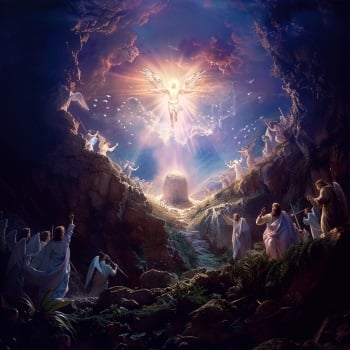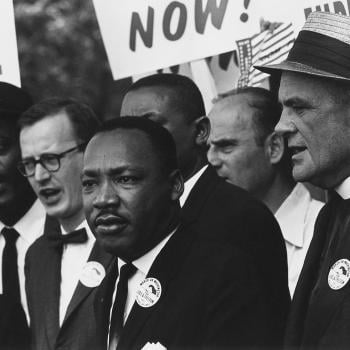 For my first column of 2011, I am offering a bit of a cheat: an excerpt from a paper I prepared for the 2010 meeting of Mormon Scholars in the Humanities. (This also offers me, conveniently, the opportunity to publicize the 2011 meeting of that organization: the call for papers on the topic of embodiment may be of interest to readers of this column; submissions are due by January 10, and details can be found here.)
For my first column of 2011, I am offering a bit of a cheat: an excerpt from a paper I prepared for the 2010 meeting of Mormon Scholars in the Humanities. (This also offers me, conveniently, the opportunity to publicize the 2011 meeting of that organization: the call for papers on the topic of embodiment may be of interest to readers of this column; submissions are due by January 10, and details can be found here.)
In the full paper I took a stab at working out a Mormon theory of gender. As part of that project I worked out a distinction between what I called "Mormon formalism," our love of institutions and rules, and the specific, mutable social forms that structure Mormon lived experience. I connect the idea of a Mormon formalism to a process of icon-making at the heart of what we might call Mormonism's "ideological work," and the result is a set of ideas with implications that reach beyond the revealed meaning of gender to the very process of revelation itself.
****
Mormonism possesses an inherent formalism, an affinity for institutions, rituals, conventions, and other social instruments that govern human affiliation and discipline human will through communally sanctioned rules. But the substantive forms of those instruments are historically contingent, socially constructed artifacts recovered from an extant culture, whether nearby or distant. Looking at the shift in Mormon marriage forms over time, for instance, we see imports from Old Testament polygamy, from the post-polygamy Victorianism of the late 19th and early 20th century, from the hedonic companionate form of mid-century, and from the intensively child-centered form of the information age.
That historical contingency should find its way into authoritative teaching would be unacceptable for a transcendent notion of authority that claims for itself freedom from location or context. But Mormonism, in its central cosmogony at the grand Council in Heaven, offers an alternative notion of authority and revelation grounded precisely in an ethos, a social location and context, and thus a Mormon worldview can accommodate the presence of socially constructed forms at its very center. What else was the Council in Heaven, after all, than the paradigmatic instance of social construction?
As evidence for my point about form and formalism, I point to D&C 132, which reveals both Joseph's deep hunger for all forms of human affiliation and a proliferation of social forms to shape and constrain that hunger. We see what I've called the formalism inscribed at the heart of Mormonism in the "covenants, contracts, bonds, obligations, oaths, vows, performances, connections, associations or expectations" that are the very instruments of exaltation. But we also glimpse a curiously polymorphous assortment of substantive social forms in D&C 132:55: Joseph is promised "fathers and mothers, brothers and sisters, houses and lands, wives and children, and crowns of eternal lives in the eternal worlds." Why so many fathers, and so many mothers, as well? Why, indeed, so many wives and so many children? The intrusive grammatical plural suggests as well a plurality of social forms, each localized within a particular set of material relationships encoded in "houses and lands." Joseph finds no unitary social form that exists outside or beyond historical conditions, but rather a profusion of forms grounded in the earth and beam of history.
To emphasize the historical production of knowledge has generally been to undermine authoritative claims grounded in that knowledge—that is, to sponsor resistance to oppressive and illegitimate social forms. And certainly one can find strands of this emancipatory spirit in Mormon scripture and history. One can point quite rightly to Joseph's fiery condemnation of the creeds and the "traditions of the fathers"; it is quite true that references to "tradition" in restoration scripture are overwhelmingly negative. Joseph understands "tradition" and "creed" as denials of living revelation, and I would suggest that it is to that denial, rather than to the traditional forms themselves, that he objects.
By contrast, and in support of the idea of an "iconophilic" or "formalist" Mormonism, the idea of order, as in the "patriarchal order" or the "united order," is foundational in Joseph's thought, and it gives entry to a concept of revelation that embraces rather than repudiates history and its finite forms, that recognizes the social origins of knowledge and indeed mythologizes that origin at the Grand Council. In my view Mormon thought ultimately is not iconoclastic. On the contrary, Mormonism is deeply iconogenic, or at any rate iconophilic: it embraces social forms that constrain human affiliation as the very vehicles of theosis. If one understands social construction as a kind of revelation itself—that is, as a legitimate ground for an exalting communal order and the discourse it produces—then one can understand the human subject, even the gendered subject, as fully embedded in history.
We have a name for God entangled in history, for the divine Word articulated in time and place, for the true revelation that bears historical finitude not only as scar but also as seal: we call him Jesus Christ. In this sense, the Mormon theory of gender is finally christological: God incarnate, God in history. It marries time with eternity, and in time leads us to eternity.
1/5/2011 5:00:00 AM





